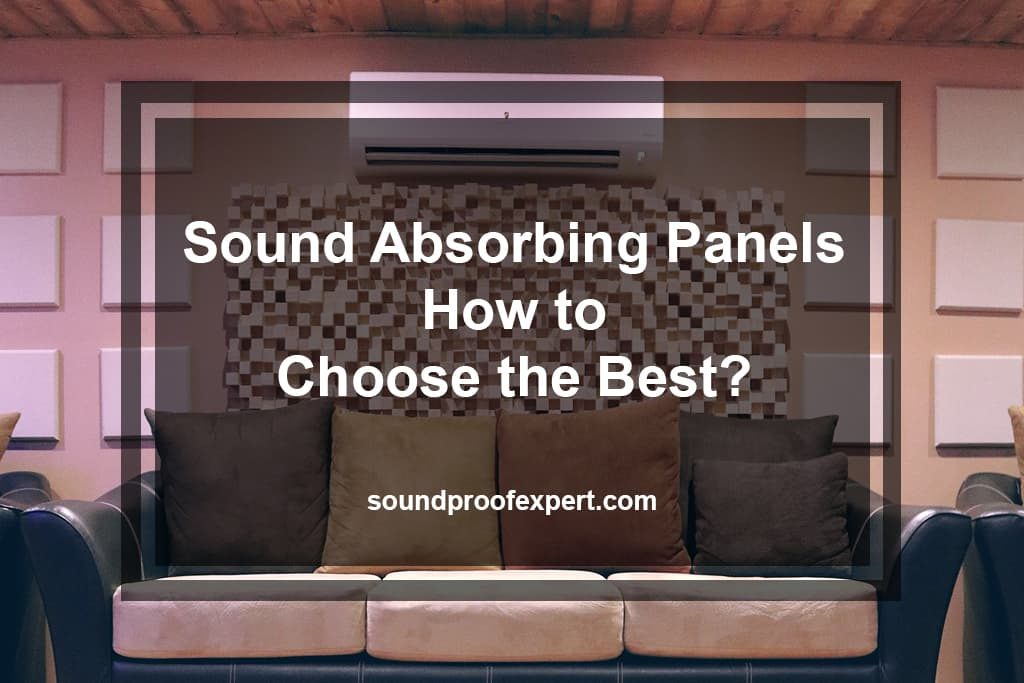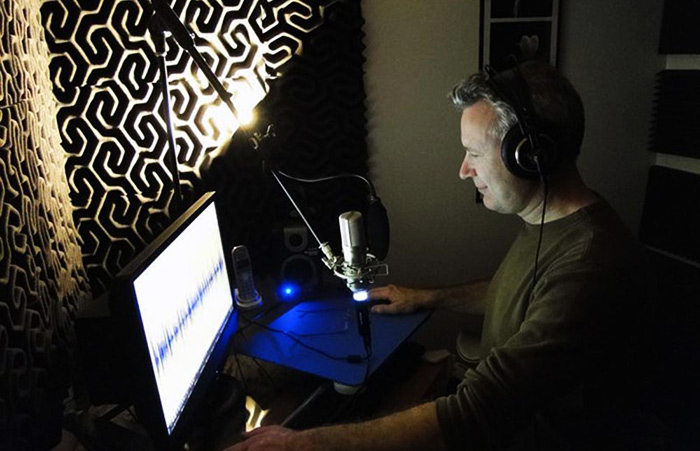
If you are soundproofing your room, you will want to choose sound absorbing panels that will get the job done right the first time. The last thing you want to do is purchase a pack of soundproofing panels that render useless, sending you back to the drawing board.
Before you go purchasing the first pack of sound absorbing panels you come across, you need to know how to choose the best ones. This way, the job is done right the first time, and you can enjoy a soundproofed room or studio immediately!
Acoustic Panels 101
If you are new to acoustic panels, you may wonder what they are and how they work. I’ll give you a brief explanation of acoustic panels and how they apply to sound absorption.
Acoustic panels are made of foam and absorb mid and high frequencies. This is what makes acoustic panels so useful when soundproofing your home or studio. The surface of the panel can be flat or sculpted, and the panels come in a variety of sizes.
Flat surface panels are flat and will absorb sound through the thickness of the foam. The thicker the panel, the more sound will be absorbed.

Sculpted panels are foam panels that have sculpted features that aid in sound absorption. These sculptures may be ridges, pyramids, or egg crates.
Acoustic panels are easy to install, making them an effective method in soundproofing any room in your home, office, or studio.
Panel Thickness – 1” 2” or 4”
Acoustic panels come in all shapes and sizes, so it is important to pay attention to the size and thickness of the panels before you purchase. Panel thickness will be one-inch, two-inches, or four-inches thick.
Spoiler alert: the 4-inch thick foam panels will absorb sound better than one-inch thick foam panels.
Does this mean you should always choose 4-inch thick foam panels? Not necessarily. In fact, I’ll explain why in the next section below.
Surface Sculpture Pattern
Sound absorbing panels may be flat or designed with a raised sculpted surface. These sculpture panels are designed with raised features, such as pyramids, ridges, or egg crates. These sculpted sound absorbing panels are usually about two inches thick, yet they produce great soundproofing and sound absorbing results because of their raised sculpted design.

The design will both absorb and reflect the sounds that it comes in contact with. This means that the 2-inch thick sound absorbing panels may be as effective, or possibly more effective than the 4-inch thick flat panel.
Of course, this all depends on the application in which you are using sound absorbing panels and the frequency of the sound waves being absorbed.
Speaking of frequency, this brings me to the next feature when choosing the best sound absorbing panels.
Noise Reduction Coefficient (NRC)
You should always look for an NRC rating on the sound absorbing panels you find. The NRC rating will fall between 0 and 1. This means you will see the rating as a decimal, such as 0.75.
So what does this mean?
Seeing an NRC rating of 0.75 means that 75% of the sound that comes in contact with the sound absorbing panel will be absorbed. Therefore, you will only hear approximately 25% of the remaining sound that is not absorbed by the sound absorbing panels.

Naturally, the higher the rating or the closer to 1 the rating is, the better the sound absorbing panels will be at absorbing sound. After all, absorbing sound is essentially the scientific term for soundproofing because the panels are not removing the sound that is being put out, they are simply absorbing it to keep you from hearing it.
A low NRC of 0.5 or less means that less than 50% of the sound that will come in contact with the sound absorbing panels will be absorbed. This means that you will hear over 50% of the original sound. This is a large percentage.
This means that even the thickest, most dynamically designed foam panel can still be rendered useless if it only has an NRC rating of 0.25.
Size of Panels
The last feature to consider when choosing the best sound absorbing panels is the size and quantity of panels you will receive. If you need to cover a large area, you will want a large quantity of fairly large foam sound absorbing panels.
Foam sound absorbing panels typically come in 24” x 24” squares, or 24” by 48” rectangles. These 24” x 24” or 24” x 48” panels usually come as a pack of 12, but sometimes they can be found in packs of 6, 18, or 24.
Put it All Together
Now that you know what to look for when choosing the best sound absorbing panels, you need to put it all together.
I have put together a couple of options of sound absorbing panels as an example of what to look for.
Eggcrate Soundproofing Tiles (12” x 12”) are ½-inch thick and come in a pack of 12. They reduce noise between 80% and 90%. This means they have an NRC of 0.80 to 0.90.
Another sound absorbing panel is this Acoustic Foam Panel 48” x 24” x 1”.
These are flat foam panels at 24” x 48” and 1-inch thick. They are thick and can cover a large surface area.
Things to Remember
You will want to pay attention to the sizing dimensions of the sound absorbing panels to determine how big you need the panels to be, how thick they need to be, and the surface the panels need to be. All of these factors will contribute to the overall sound absorption of the panel.
Check and see if the soundproof panels include an NRC rating. The NRC rating is specifically calculated to determine the noise reduction coefficient. This tells you exactly how much noise will be reduced and absorbed in the foam when the sound comes in contact with the panels. Size, shape, thickness, and NRC are all important factors to consider when choosing the best sound absorbing panels.



Hi Jim,
could you please let me know which sound insualtion material is the best for under natural stone and under the floor? what are the criterias and standards?
Thanks in Advance